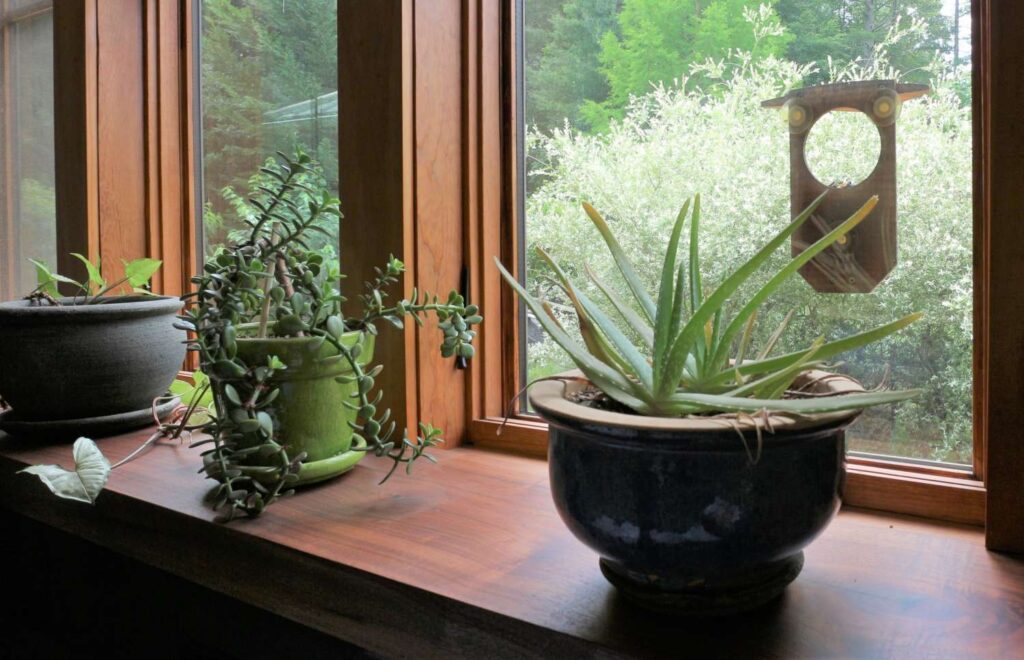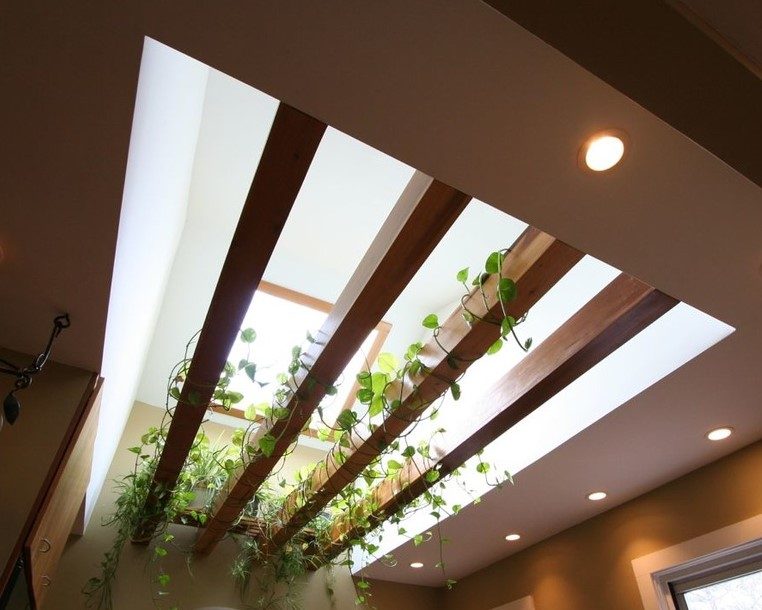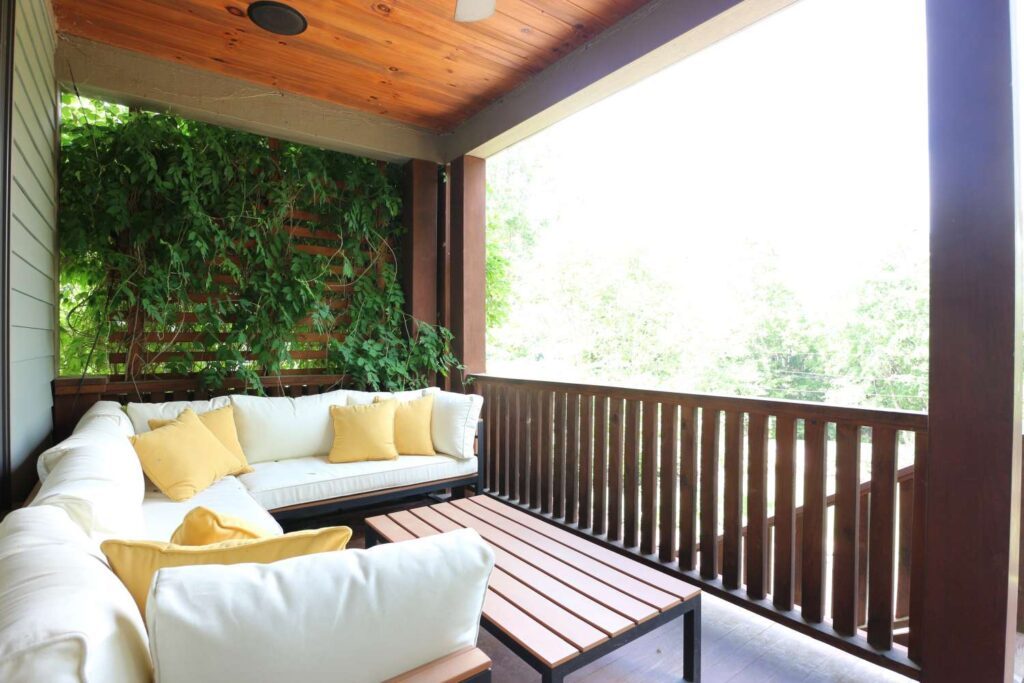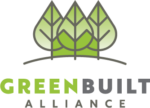We all know from experience that being immersed in nature makes us feel calmer, happier and rejuvenated. We seek a connection with nature, particularly when we are feeling stressed or sick.
It was only about 55 years ago that this innate desire to connect with nature and natural systems was given a name in the English language — biophilia — by social psychologist Eric Fromm. The term was later popularized by biologist Edward Wilson in the 1980s.
Since then, the benefits of connecting with nature in the built environment have been studied by specialists trying to increase productivity in the workplace, improve educational outcomes in schools and speed the rate of healing in healthcare settings.
The same biophilic design principles being studied and implemented in institutions can be applied to our homes where we spend the majority of our time so that we can see similar benefits in our personal productivity and well-being.
Here we’ll look briefly at those biophilic design patterns that are easiest to implement in existing homes.

Bring light in
Ensure your home is filled with as much natural dynamic light as possible. Being exposed to the daylight as it moves and changes throughout the day not only increases connection to nature, but can improve sleep at night. Our circadian rhythms are controlled in large part by light cues. Keep blinds raised and interior doors open as much as possible to allow light (and air) to flow through your home from room to room.
Encourage airflow
Temperature variation and fresh air in a home can be refreshing and invigorating and make the home feel alive and part of the natural world, rather than separate from it. Open windows on opposite sides of the home to encourage cross breezes, and on upper and lower floors to encourage the stack effect.
If you must keep your windows closed, ceiling fans and freestanding or desktop fans are important for simulating natural breezes. Some fans now have a “natural breeze” mode which speeds up and slows down the fan’s movement to imitate the feeling of a natural breeze. Even simulated nature has been shown to positively affect wellbeing.
Allow auditory connections
Allow the sounds of birds chirping, rain falling and leaves rustling in the breeze to come into your home by opening windows near where you spend time. If you are unable to open the windows in your home, playing nature sounds or using a small indoor waterfall can provide a similar effect.
Create visual connections

It is widely recognized that views are desirable features in our homes. You may not be able to create distant views where there are none, but being connected to nature on a more intimate level is important, as well.
To increase this connection, position landscape plants strategically to be seen through specific windows or to block non-natural views such as a neighbor’s parking area or trash cans. Choose plants that provide shelter and food for birds to encourage them to frequent the viewshed of the window. Place indoor furniture so that there are views out windows from seated positions as well as standing, and to ensure furnishings don’t block any potential views.
Bring nature indoors
Indoor plants help to blur the lines between indoors and outdoors. Place shelves or plant stands under windows or add a plant shelf that crosses the window itself. Off-the-shelf products exist for growing plants vertically on a wall and can help bring nature to a windowless interior wall.
Consider adding windows or skylights to rooms that are occupied often but do not receive adequate daylight. It may only cost only a few thousand dollars, but drastically improve the quality of light and connection to nature. Get creative! Sometimes the most beautiful solutions arise from challenging situations.
Use natural materials
Choosing natural materials such as wood and stone for structure, finish materials and accents in our homes connects us both to the natural world and to our geographic region, if we choose locally sourced products. The use of a natural color palette, particularly greens, has also been shown to be beneficial.
Create halfway spaces
Create a comfortable seating area in which to spend down time outside of the house. Semi-enclosed porches and outdoor rooms can provide a feeling of protection while allowing us to look out upon the natural world. These spaces encourage us to spend more time outside while at home and help to blur the divide between indoors and out.

Enliven your entry
Plant edibles, herbs and flowers along the path to the entry you and your guests use most to provide a multi-sensory natural experience as you transition between indoors and outdoors. Seeing the changes in what you have planted each time you pass deepens your connection to the plants, allows you to respond quicker to any problems that may arise and reminds you to harvest plants at their prime. Brushing up against a lavender bush or rubbing a leaf between your fingers as you walk by can awaken your sense of smell and be invigorating.
Humankind has been building shelters that protect us from, but connect us to, nature for many thousands of years. Before that, we simply lived in the natural world.
Because humans have spent millions of years living in harmony with the natural world and a relatively short time in artificial indoor environments, biophilic design concepts can be easy to dismiss as intuitive and obvious. However, if we take the time to consciously recognize the patterns, we can consider how to fully utilize them in our everyday lives at home to reconnect with the natural world and help ourselves and our families to be happier, healthier and more productive.
Emily Boyd is co-founder of Mountain Sun Building & Design, a design-build firm focused on net-zero and green-certified homes. Having graduated from Appalachian State University in 2000 with a degree in construction and appropriate technology, Emily is a Certified Professional Building Designer and Certified Permaculture Designer. Connect with Emily at mountainsunbuilding.com.
You can also view this article as it was originally published in the 2019-2020 edition of the directory.

